Special Agent Wesley Petonak, 34, was sitting at his desk in November 2018 when he came across a PowerPoint presentation file that alarmed him.
A nine-year veteran at San Diego’s Homeland Security Investigations office, Petonak knew firsthand the importance of intelligence gathering for successful immigration enforcement at the U.S.-Mexico border.
But the PowerPoint was different.
Nine of the slides revealed that agents working under “Operation Secure Line” — a codename for the government’s response to a caravan of thousands of Central American migrants approaching the southern border — were also tracking the movements of journalists, attorneys and humanitarian aid workers.
Petonak would learn that many of the targets were U.S. citizens who had broken no laws, yet the government would put them in secondary screenings for hours, place alerts on their passports, or worse, refuse to let them cross into Mexico.
Petonak said he shared his concerns with his supervisors and explained why he felt those tactics were violating basic constitutional rights. But his supervisors pushed back, describing the tactics as “standard practice.”
So, Petonak decided to take action. He took photos of the PowerPoint slides and shared that confidential information with NBC 7 Investigates.
And now eight months later, Petonak is publicly identifying himself as the whistleblower cited in the story.
“It seemed these people's rights were being infringed on,” Petonak explained. “I took an oath to uphold the Constitution. Everyone has rights. And just because I don't agree with your political stance on something, doesn't mean you don't have the same rights as every other person.”
“Everyone knew what was going on…”
NBC 7 Investigates broke the border surveillance story on March 6, using Petonak’s leaked documents and additional research as the basis for the report.
Among the 59 individuals targeted by the Department of Homeland Security (DHS) intelligence-gathering effort were 10 journalists, three attorneys and dozens of immigration aid workers.
Twenty-five of those targets -- also referred to as “Sources of Information” -- had accompanying Word documents compiled on them that included details on their travel, education and work histories, the names of close relatives and for some, photos taken from their social media accounts.
The public outcry was immediate.
Lawmakers called for an internal investigation into the agents’ practices. DHS eventually agreed. The Office of Inspector General for DHS announced it would conduct its own, separate investigation. A coalition of more than 100 civil rights organizations demanded that DHS and Customs and Border Protection (CBP) put an end to using the tactics. And several individuals listed in the document as “Suspected Organizers, Coordinators or Instigators” tied to the migrant caravan — including a New York-based pastor who had crossed the border to pray with asylum seekers —sued U.S. Customs and Border Protection and the Department of Homeland Security over those questionable practices.
Special Agent Wes Petonak discusses how he came across the surveillance documents in the latest episode of INSIGHT. Listen to the episode below.
The response was validating for Petonak, who played no role in Operation Secure Line but discovered the files when reviewing SharePoint accounts to which the documents had been uploaded.
Petonak had a “top secret clearance,” but he says the documents were unclassified and could be legally accessed by all Homeland Security Investigations personnel he worked with, from secretaries to the Special Agent-in-Charge.
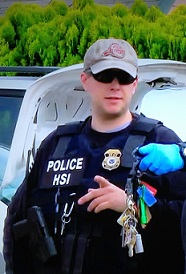
In February 2019, Petonak was placed on administrative leave for a “lack of candor” and other allegations tied to an unrelated incident. While he was at home, Petonak decided to share the documents with NBC 7.
But days after NBC 7’s initial report, Petonak says his access to work applications, including his email account, were blocked without warning.
“I knew that they probably figured out who came forward [and leaked the documents,]” Petonak recalls. “I didn't want it swept under the rug. And obviously, with everything that's come out, and the fallout, I feel that I made the right decision.”
As news of the border agents’ tactics circulated, explanations from CBP officials as to why border agents were collecting this kind of information changed.
At first, a CBP spokesperson said people listed in the document Petonak leaked had either witnessed or taken part in acts of violence against CBP agents near the San Ysidro Port of Entry. But that explanation clashed with Petonak’s understanding that the PowerPoint document was created weeks before the altercations.
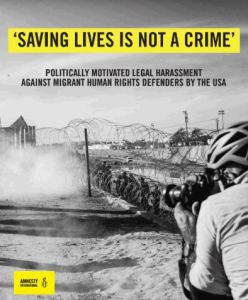
Months later, a CBP spokesperson responded to the coalition of civil rights organizations and said that the targets of surveillance were linked to human smuggling efforts, a claim that border agents have made with increasing frequency in the past two years.
Amnesty International also weighed in on the issue, with a July 2019 report that documented dozens of cases in which the U.S. government allegedly “misused and leveraged the criminal justice system to deter and punish...individuals challenging — or even documenting — systemic human rights violations by U.S. authorities.” That report cited NBC 7’s documentation of CBP’s controversial tactics.
Amnesty International also disclosed that the Departments of Justice and Homeland Security were increasingly using a specific law to justify their controversial tactics. That law -- formally known as U.S.C. 1324 -- grants border agents a wide range of investigatory powers to surveil and detain those suspected of human smuggling.
But Petonak said he saw no evidence that the ten journalists, three immigration law attorneys and other humanitarian aid workers under surveillance had any involvement in human smuggling.
 LinkedIn
LinkedInPetonak also said information in the Operation Secure Line files indicated those files had been uploaded by the Chief Intelligence Officer for the San Diego office of Homeland Security Investigations, Lea DiSenso.
“Working at a place where...it's almost like certain individuals feel invincible, that their word is gospel and that they get to make decisions — even wrong decisions, illegal decisions — and then finally to see that they got their hand caught in the cookie jar in such a public manner; it's validating to see that,” Petonak said.
(NBC 7 contacted the U.S. Customs and Border Protection, Department of Homeland Security and Chief Intelligence Officer Lea DiSenso for comment on this story but they did not respond.)
“Ironically, I am a Republican.”
Operation Secure Line started in November 2018 in response to the arrival of more than 9,100 migrants traveling north in a caravan from Central America to the U.S./Mexico border, according to DHS records reviewed by NBC 7. Agents said most of those asylum seekers were from Guatemala, Honduras and El Salvador.
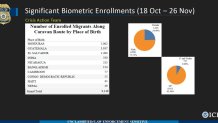
Petonak said border agents working under Operation Secure Line communicated daily about the caravan.
An email from David Shaw, Special Agent-in-Charge of the San Diego sector reads: “We would like to compile a list of credible information obtained from any Confidential Informants (CIs) and/or Sources of Information (SOIs) regarding the incoming migrant caravans and/or cartel actions related to the caravans.”
Petonak says the journalists, attorneys and aid workers who were caught in the intelligence-gathering efforts were unwillingly compelled by agents to be “Sources of Information.”
Eight journalists who were targeted by border agents told NBC 7 in March that during secondary screenings, plainclothes officers questioned them for hours about where migrants were staying and what their plans were after arriving in Tijuana.
“I felt like I was an informant,” said freelance photojournalist Ariana Drehsler.
Emails reviewed by NBC 7 indicate that agents from DHS, CBP, ICE, Border Patrol, and the FBI, along with a San Diego County Sheriff’s Deputy, were part of a “working group” that investigated the migrant caravan.

NBC 7 filed a public records request for more information about the San Diego County Sheriff Deputy’s involvement in the operation but the request was denied. Sheriff officials cited exemptions covering “personnel,” “intelligence information,” and “security procedures” for that denial.
In response to questions about the appropriateness of a Sheriff’s Deputy assisting federal agents in gathering intelligence on the migrant caravan in Tijuana, Justin White, a spokesperson for the department said its involvement hadn’t crossed a line and was in line with a law -- formally known as Senate Bill 54 -- preventing state and local officers from investigating, or arresting persons for federal immigration enforcement.
“Our involvement was limited to public safety and law enforcement related issues, including civil unrest, within the jurisdiction of San Diego County,” White said. “The Department's involvement...was consistent with SB 54”
While Petonak disagreed with the government’s tactics, he notes he “wasn’t a fan” of the migrant caravan, and thinks the U.S. government does have a responsibility to secure our borders.
“Ironically, I am a Republican,” Petonak wrote U.S. Senator Kamala Harris. “However, I took an oath to uphold the Constitution, and could not stand by to see peoples’ rights, U.S. citizens or not, be violated.” Petonak offered Harris and other lawmakers assistance and more information on the tactics used, in the event that lawmakers wanted to pursue or investigate it further.
By pulling journalists, attorneys and aid workers into secondary screenings every time they arrived at a Port of Entry, Petonak said agents were treating them as if they were the subject of a criminal investigation, which they were not.
“They're held at the border under the auspices of a ‘border search.’ But what contraband are [agents] searching for? That's the whole meaning of a ‘border search’: to search for contraband. And they’re holding these people for hours to question them about what is going on [with the] migrant caravan down there in Tijuana,” Petonak said. “It's not like these are pesky little rules, these are fundamental.”
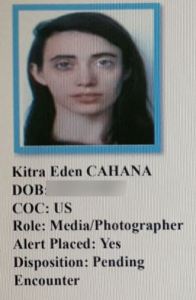
Agents placed “alerts” on the passports of many of the journalists, according to the records shared with NBC 7. Some of them say they are now fighting to have their passports cleared.
Among the “Operation Secure Line” targets is Kitra Cahana, an award-winning freelance photojournalist who said Mexican authorities detained her for 13 hours detained when she tried to travel south to Mexico City to cover the caravan. Cahana claims she was eventually denied entry into Mexico and sent back to the U.S.
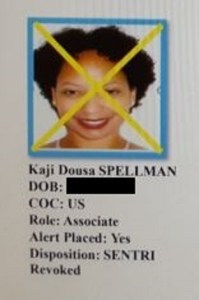
Pastor Kaji Dousa, formerly of the United Church in La Mesa, was another target. Dousa claims she was crossing at the San Ysidro Port of Entry to pray with migrants seeking asylum when agents led her to a back room, where she sat for hours until they questioned her about her work.
Dousa is suing the DHS for interfering with her constitutional right to counsel and assist members of the migrant caravan.
Alex Mensing with Pueblo Sin Fronteras, a human rights group that assisted the migrant caravan, told NBC 7 he’s been sent to secondary screenings nearly every time he has crossed the border north to San Diego, more than 40 times in the last year. Mensing said he has never been charged with a crime.
“He pointed the gun at me and said, ‘I’m going to shoot you.’”
Petonak was born in Morris County, New Jersey, and moved to San Diego in April 2011 to work for DHS Investigations.
For his first six years, Petonak worked on the Border Enforcement Security Task Force, focusing on gun trafficking into Mexico and border violence. Eventually, he says his duties expanded to investigating all contraband crossing into the U.S.
But his border enforcement career was interrupted in August 2017, when Felicia Ocampo claimed that Petonak, in a fit of road rage, pointed his gun at her while she was driving on Interstate 15. Ocampo, then 31-years-old, said Petonak drove alongside her, and yelled for her to pull over. The Escondido woman said her toddler son was in the back seat during the whole ordeal.
Ocampo’s allegations led to investigations by the California Highway Patrol, ICE Office of Professional Responsibility, and Office of Inspector General for Homeland Security.
“He pointed the gun at me and said, ‘Pull the (expletive) over or I’m going to shoot you,’” Ocampo told the San Diego Union-Tribune. “He said ‘If you don’t shut your mouth, I’m going to put my gun in it and shut if for you.’”
But Petonak insists the opposite happened. He claims Ocampo “tailgated” and “tried to run him off the road.” He says that’s why he felt obligated to pull her over.
“Under our policies and under applicable federal and state laws, I conducted an investigative stop,” Petonak told NBC 7. “I think I just caught her on a bad day.”
A spokesperson for the California Highway Patrol said investigators could not substantiate Ocampo’s allegations.
The San Diego County District Attorney’s office told NBC 7 that, “After a thorough review of the facts and evidence [in the case], we declined to file criminal charges [against Petonak].”
Petonak was placed on desk duty while the incident was investigated. Ironically, he says that the desk duty assignment led him to find the PowerPoint list the following year.
“I was sitting at my desk ‘finding the end of the Internet,’ as my boss told me to do, and that’s when I stumbled across the [Operation Secure Line] application.”
While on administrative leave, Petonak says he recalled finding the PowerPoint document and how his supervisors had disregarded his concerns about the agency’s tactics. He decided to take a “drastic step,” and share that information, and his concerns, with NBC 7 Investigates.
“I just wanted it to be raised to the point of, ‘Hey, this is wrong, somebody needs to look at it.’” Petonak said. “I tried the basic channels initially, and then when those avenues weren't open to me anymore, I sought out a different avenue to have this situation looked at.”
In February 2019, the department placed Petonak on administrative leave for “conduct unbecoming to a law enforcement officer,” and “a lack of candor” tied to the Ocampo investigation. According to court records, Petonak’s superiors said he had lied to CHP and DHS investigators when he said he was certified by the state to conduct traffic stops, like the one with Ocampo.
Petonak says he never asserted he was certified, only that he took a training course that allowed him to enforce state penal codes, and that he stopped Ocampo for “attempting to assault an officer,” - a federal charge.
On April 22, Petonak was officially terminated from Homeland Security.
Protecting confidential sources is paramount for journalists. But when Petonak decided to file a wrongful termination lawsuit against the federal government, his name became part of the public record, leading him to agree to an on-camera interview and come out publicly.
Now, he says he’s fighting to have his record cleared.
“You’ve got to make sacrifices to make a difference. And that's a sacrifice I made,” Petonak says. “I ask and I pray that things work out the right way in the end for me."
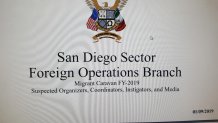
“A database does not exist…”
After our initial reporting, NBC 7 filed a Freedom of Information Act request for records that would reveal how DHS chose its surveillance targets tied to the migrant caravan, and the extent of those controversial investigations.
When DHS, CBP, ICE, and U.S. Citizenship and Immigration Services (USCIS) declined to produce those documents NBC 7 and the Reporters Committee for Freedom of the Press (RCFP) filed a federal lawsuit in April challenging the government’s refusal to release detailed information about the “database or application” used to track journalists, attorneys and immigration advocates.
Then, on August 29, as part of Customs and Border Protection’s Status Report, the agency said it would not produce any records tied to the list because “no such ‘database(s)/application(s)’ exist.”
NBC and RCFP disagree with CBP’s position and pressed for further explanation, because CBP and DHS officials had never before denied the existence of those documents.
On October 24, CBP offered a more complete explanation.
“While the NBC 7 article suggests that the information described...is drawn directly from an underlying database or application, this is not accurate,” CBP’s statement read. “The information described in the NBC article and the accompanying ‘screenshots’ appear to be drawn from a single, multipage electronic document. A search of CBP’s records did not reveal any database or application of activists, journalists, and social media influencers tied to the migrant caravan, as described in the NBC 7 article.”
Petonak says the government is parsing words over its use of Microsoft tools. He stands by his assertion that all of the information shared with NBC 7 was held in an application accessed and used by hundreds of border agents in San Diego and across the U.S.-Mexico border.
Despite CBP’s position, the lawsuit seeking public disclosure of one aspect of the agency’s border enforcement tactics is proceeding forward.
"NBC San Diego's reporting has exposed the deeply troubling treatment of journalists by the federal government. The public deserves a full account of why the United States has been tracking and questioning reporters about their work,” said Adam Marshall with the Reporters Committee for Freedom of the Press. “NBC and the Reporters Committee are vigorously pursuing their rights for records about these activities to ensure the public knows what CBP has been up to."

